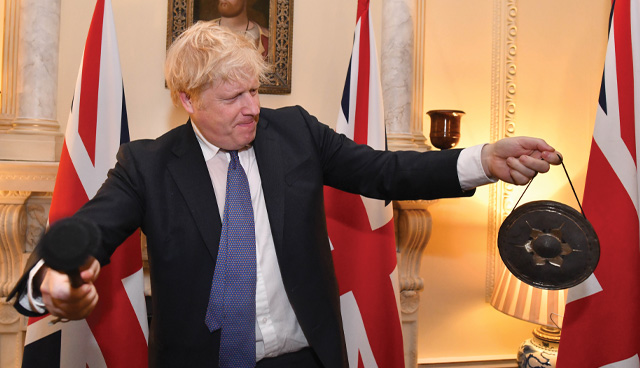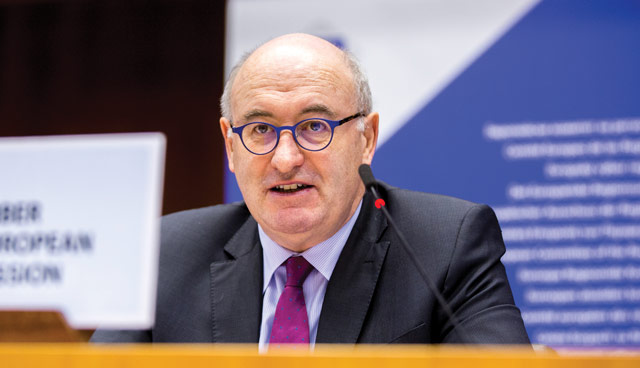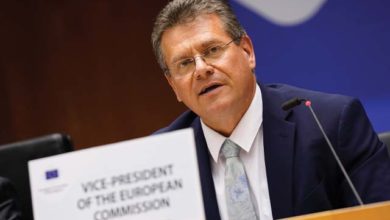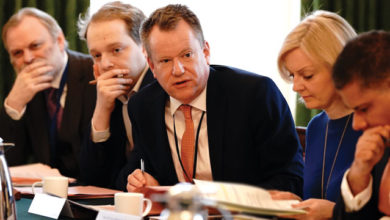Brexit: Future trading arrangement

With the UK having officially left the European Union, all eyes are now turned to the future trading relationship. Ireland’s Phil Hogan, the European Commissioner for Trade, is a central figure.
As the UK and EU negotiators jockeyed for position ahead of talks on the future relationship, both sides have offered vastly differing views on what such an agreement might look like.
Boris Johnson’s refusal to extend negotiations on the future trading relationship beyond 2020 is a major factor of the increasing risk that any future trade is done under WTO terms.
The ambitious deadline was already being met with scepticism even before the outbreak of the global pandemic.
The window to secure a deal is actually less than the 12-month calendar year, given the likely time delays associated with the EU ratification process. In essence, the window for one of the world’s most complex trade arrangements, the terms of which are unprecedented, is less than six months.
Trade Commissioner Phil Hogan was highly sceptical of Prime Minister Boris Johnson’s timetable, describing the British Government’s decision to enshrine the December 2020 date in law as “very odd” and a “stunt”.
“From our point of view it is important that we move from stunt to substance. It would be helpful if the focus was on content rather than timetables,” he said.
The EU’s publication of its draft negotiating guidelines appears at odds with Prime Minister Johnson’s assertion that the UK has no intention of following EU rules in future. Trade barriers between the UK and the EU have already been established and where the UK chooses to diverge further from EU regulations, these will increase. Former Chancellor Sajid Javid raised concerns earlier this year in warning businesses to adjust because the UK “will not be a rule taker”.
The recent command paper by the UK on the Northern Ireland Protocol appeared to show a move by the UK to acknowledge the necessity to adhere to the terms of the agreement. However, the command paper lacks technical details and advocates for ‘soft’ solutions.
The EU are insisting on “level playing field” clauses in a future agreement, hoping to prevent the UK from undermining the single market in key sectors. Johnson has said that there is no need for an agreement to involve EU rules any more than the EU should be obliged to accept UK rules.
An optimistic reading of the UK’s approach is that Johnson and the Government are preparing the ground for alignment in key economic areas. Chris Giles of the FT interpreted the pre-discussion discourse as being a request from the EU to Britain to not diverge its current standards from the EU minimum level. Similarly, he believes that Johnson is indicating that the UK Government “does not want to take back control from the EU, it wants the right to do so”.
“Mr Johnson regularly appears to be threatening the EU, when in fact he is just reading out agreements already struck in martial tones,” he explains.
“The battles Mr Johnson chose to fight this week sounded blood-curdling, but are either fights against an army of straw men or battles in areas where a path towards compromise seems likely to be found.”
However, that the UK is unlikely to align fully with EU regulations is clear in that the British Government has outlined not one but three potential future shapes of an agreement. Its preference is for a free trade agreement between “sovereign equals”. That the EU would view the UK as an equal is overly ambitious. Trade Commissioner Hogan recently described the UK’s exit from the single market for greater control over trade as like trading a Rolls Royce for a second-hand saloon.
With an economy almost six times that of the UK, the EU recognises that it is much less dependent on trade with the UK than vice versa. The EU is the UK’s most important trading partner. However, the EU is well aware of the UK’s capacity to disrupt its economy given its proximity. While this may buy the UK some flexibility in negotiations, it’s unlikely to be enough to prevent the EU walking away from the negotiations if the UK seek to undermine the single market.

The UK’s other option is for a Canada-style agreement. The EU-Canada deal, which took eight years to negotiate and has yet to be signed off by all member states, is far from the zero tariff and zero quota desire mooted by some and retains tariffs on things like poultry, meat and eggs, as well as increasing quotas in other areas. The deal takes little account of services exports, meaning high tariffs would be economically damaging to the UK, and London in particular. Finally, such a deal would not remove the necessity for border checks.
The ‘Australian model’ is no deal in nicer terms. Australia’s trade with the EU is negligible and they currently operate on WTO terms. An EU-Australia Partnership Framework agreed in 2008 reduces some trade barriers but is not a free trade agreement.
In the event of no trade agreement, risk of checks and controls at the border in Ireland would be avoided through the terms negotiated in the withdrawal agreement, which state that goods must be controlled as they cross the Irish Sea into Northern Ireland. However, even this is a cause for uncertainty. Prime Minister Johnson has repeatedly downplayed the need for such checks to be carried out.
In a visit to Belfast in January, Michel Barnier acknowledged Johnson’s assertion that no checks would take place in the Irish Sea by warning that the UK’s decision to create two regulatory spaces would render frictionless trade impossible and checks indispensable.
Highlighting the EU and the UK’s “joint responsibility” to make the agreement work on the ground, he stressed: “The EU takes this responsibility very seriously. The withdrawal agreement must be applied with rigour and discipline by all sides. It cannot be re-opened under the guise of implementation. We will be monitoring its correct application very carefully.”
The commitment of the EU to compel the UK to honour the terms of the withdrawal agreement and any future trading relationship is not in doubt. However, as recently as the end of January, Hogan, warned that a no deal outcome was still a possibility.
“Both sides have cards to play, but perhaps the UK doesn’t realise the EU might have more cards to play. So, time will tell in the context of the negotiations how the relationship will be, or the mood music in the negotiations,” he said.





